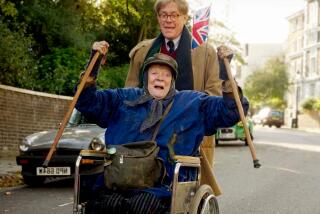Mandela and South Africa
- Share via
Charlene Smith’s indictment of Winnie Mandela (“Winnie Mandela: Charming, Arrogant--and Embarrassment,” Opinion, Feb. 26) serves no purpose but to legitimize the propagandistic efforts of the South African government to besmirch the image of the black liberation struggle. “Like a caged tiger with no way of taking revenge on her tormentors,” Smith asserts, “Winnie Mandela has turned on her young, her people.”
Given the gravity of the forgoing claim, one would have expected a substantial body of facts to support it. Smith relies instead on specious reasoning and innuendoes that clearly fail to make her case.
To discredit Mandela, Smith cites the idol’s once controversial statement in support of “necklaces” as a weapon for black liberation; Smith claims that Mandela is derided as “her highness” in “resistance circles”; Smith asserts, without a shred of evidence, that Mandela cannot live “with people of opposing views”; Smith attributes to Mandela complicity in every imagined excess of her bodyguards, including “her role in the abduction of the four youths and the ultimate murder of 14-year-old Stompie Mokhetsi Seipie.” Finally, the writer condemns Mandela for having “built a mansion in Soweto bigger than many in Johannesburg’s luxurious white suburbs.”
Mandela may not be a saint, but she has served as a symbol of hope for people who have little else to sustain them. Through most of the 26 years of her husband’s imprisonment, Mandela has been revered as a heroine and leader. Why such veneration? Because, with extraordinary grace and courage, she has maintained her equilibrium in spite of enforced isolation, police brutality, detention and banishment.
Is it just possible that Mandela’s bodyguards, whom she is forced to maintain for protection, have been infiltrated by government agents determined to destroy her public image? Is it conceivable that her “mansion,” built in the heart of the nation’s largest black community, was intended to serve as an alternate conference center for the leaders of the liberation struggle, who would otherwise be forced to confer among hostile whites in Johannesburg? Finally, is it likely that the entire Mandela expose is an attempt by the South African government, which has forbidden press coverage of its own ongoing atrocities against blacks, to magnify a minor schism between African factions and thereby discredit the overall struggle for liberation?
In the long and bloody history of South Africa, there have been the recurrent isolation and destruction of emergent black leaders. Let us not, unwittingly, add another chapter to this carnage by joining in the unjustified befoulment of Winnie Mandela, “the Mother of the Nation.”
LEGRAND H. CLEGG II
Compton
More to Read
Sign up for Essential California
The most important California stories and recommendations in your inbox every morning.
You may occasionally receive promotional content from the Los Angeles Times.













